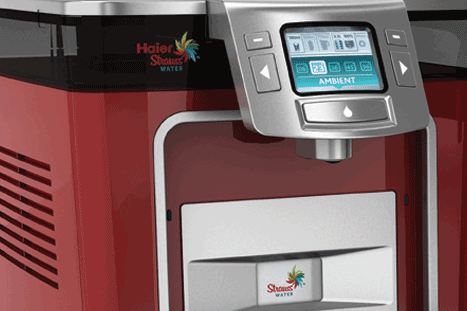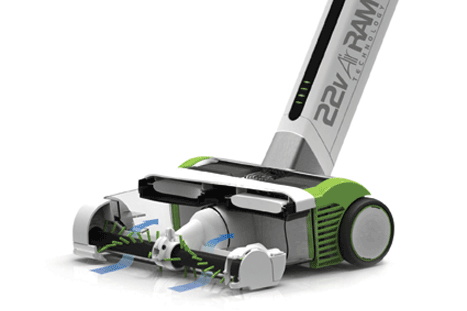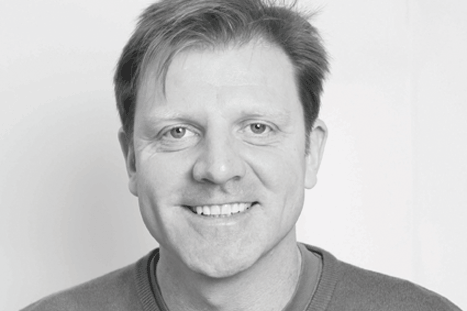For many of our more traditional engineering and design companies, the notion of employing a sustainability guru probably conjures up images of some insufferable character floating around in a hemp sack, vaguely encouraging everyone to ‘go green’. At best, an annoying PR exercise with no real mandate; at worst, a costly distraction and profit drain.
Of course, that view is very quickly becoming outdated, and many companies have already woken up to the reality that sustainability presents a real economic opportunity, as well as being an important consideration for any socially responsible business.
BMW’s DesignworksUSA division and design and innovation company IDEO both have in-house sustainability tsars, and many others companies employ outsourced expertise.
At the beginning of this year, one of the UK’s most prolific design consultancies, Seymourpowell made a key signing in Chris Sherwin as head of sustainability, with not inconsiderable clout in terms of driving change.

It’s noteworthy that design companies are taking the lead here, largely in acknowledgment of the fact that some 80 per cent of impact of the final product is determined at the initial design stage — better to factor in sustainability from the outset than tack it on later as a corrective measure.
‘Our long-term vision is to get sustainability as a factor in everything we do,’ said Sherwin. ‘When we take on a project, running a standard innovation and design process, we lead with one or two issues but consider dozens of different ones — such as can we use an existing manufacturing line? Is it safe? Is it great for people to use? There is a growing recognition that what we want to do is have sustainability as one of the those issues we consider as part of the overall mix of what good design and engineering is.’
When we take on a project, we lead with one of two issues but consider dozens of different ones
Since the bulk of the work that Seymourpowell does is in fast-moving consumer goods (FMCGs) and packaging, this is how sustainability is addressed for the main part, on the periphery.
For example, Sherwin cites Marks & Spencer’s recent new pack development, which it claims will extend the life of fruit stored in the fridge by up to two days and, as a result, reduce food waste.
The company also worked on an advanced domestic drinking water appliance for Israeli company Strauss Water.
Strauss Water utilises a gravity-based filtration system that is designed to remove impurities while keeping healthy minerals without the need for ultraviolet (UV) lamps.
Seymourpowell had to design for Strauss Water’s advanced cooling and heating technology to be contained in a compact design with a low-carbon footprint. This technology allows water to be cooled to 6ºC and heated up to 96ºC rapidly.
It’s utterly bonkers the way that we market new products, where better product equals better wattage
‘The second bit of the long-term vision is where projects will be sustainability driven, explained Sherwin.

‘The purpose of the design will be about somehow tackling some kind of sustainability issue, innovating around waste or low-carbon technologies or longer-lasting products.’
One of Seymourpowell’s clients is a company called G-Tech, which designs sweepers and vacuum cleaners. It found that many modern vacuum cleaners in the market used upwards of 2,000W of suction. However, tests in the 1940s by Hoover showed good performance with just 250W using a reasonable brush bar.
‘It’s utterly bonkers the way that we market and sell new products, where better performance and better product equals better wattage or more power,’ said Sherwin.
‘We are delivering levels of performance that are way beyond what people actually need,’ he added. ‘Quite a lot of engineers working inside organisations have got the skills and ideas to deliver better efficiency, but there’s not always the will from the market’.
The result was a 100W cordless vacuum cleaner with a 22.2V direct-current motor, which powers the brush bars and also drives a fan to compress the dirt into bales. In tests, it was equivalent to exiting more powerful (and more energy-intensive) models.
Building on this sustainability-driven consumer technology, Seymourpowell also has plans to get more involved directly with clean technology.
‘Essentially, it’s a bunch of inventors with some amazing kit who’ve now got to commercialise it and turn it into the next generation of viable products,’ said Sherwin. ‘I find it incredibly exciting to look at the stuff that’s coming out of the clean-tech revolution — things such as hydrogen fuel-cell technology that we’re going to substitute our boilers for.
‘That is an emerging sector that is growing rapidly, between six and eight per cent every year, and there are massive design opportunities in that and it won’t be the same as the existing corporates [client base]; it will be much more like working with medium-sized enterprises.’

Chris Sherwin Head of sustainability, Seymourpowell
Career and education
2012 Head of sustainability, Seymourpowell
2007 Sustainability consultant, Dragon Rouge London (clients included Akzo Nobel, ICI Paints, SABMiller, eBay, Sony, Cafédirect, Good Earth, Ahlstrom and SCA/Tork)
2006 Head of innovation at think-tank Forum for the Future
2000 Ecodesign and sustainability consultant, Philips Environmental Services, Philips Electronics
1997 Ecodesign researcher/consultant, Electrolux Industrial Design Centre
1997 PhD, Innovative Ecodesign, Cranfield University
Q&A
We’re in the depths of a double-dip recession. Will consumers and manufacturers really care about sustainability? People tend to talk about different waves of the sustainability movement, with us now in the fourth wave. In previous waves, what’s happened is that, when we’ve hit a recession, business and government sustainability commitments have completely fallen by the wayside. That happened in the ‘89–‘92 recession; we had a bunch of green products that were inferior in quality, didn’t perform and cost more, and then we hit the recession, everybody stopped buying them and companies stopped making them.
In this recession, what’s happened is that companies have already locked sustainability into their business processes and into their innovation processes in a much more systematic way. Of course, some of it’s fallen away now, and I would argue that’s probably the flaky, greenwash stuff, and good riddance I say. In a way, it’s been a good process of natural selection that the stuff we’re left with is the stuff that’s of value to business.
How do you get sustainability on the agenda for every project? The reality is it’s going to take some time from where we are today, which is sustainability in some projects but not all.
In some cases, clients aren’t putting it there, and we’ll face a little bit of a battle — or we’ll do it and won’t tell them.
There are definitely some sectors where it doesn’t make any sense to do sustainability projects — say eco-designed bullets. It’s just not the right project to be working on. But where we are at the moment is, rather than turning work away, we’re trying to influence our clients. When they’re not specifying it, we’re trying to do a bit of demand creation — so we’re trying to show them either the size of the opportunity here or if you’re an electronic company, for example, have a look at what GE and Phillips are doing on this stuff. Shouldn’t you be at the races?
Clearly you’re new to the role. How do you go about affecting change without stepping on any toes? Seymourpowell is 27 years old and has an established way of doing design and innovation, and we’ve got processes that we use and methodologies we apply to things.
What I’m desperately trying not to do is to invent a new method. I’m trying to build sustainability as much as possible into the existing ways we work, rather than coming in and saying you’ve got to use a lifecycle assessment tool or you’ve got to use cradle- to-cradle thinking.




Swiss geoengineering start-up targets methane removal
No mention whatsoever about the effect of increased methane levels/iron chloride in the ocean on the pH and chemical properties of the ocean - are we...